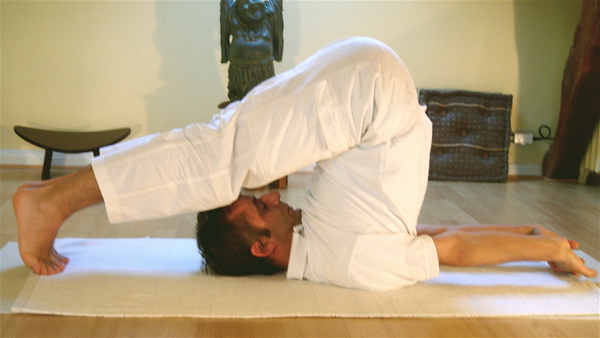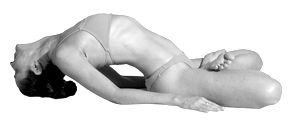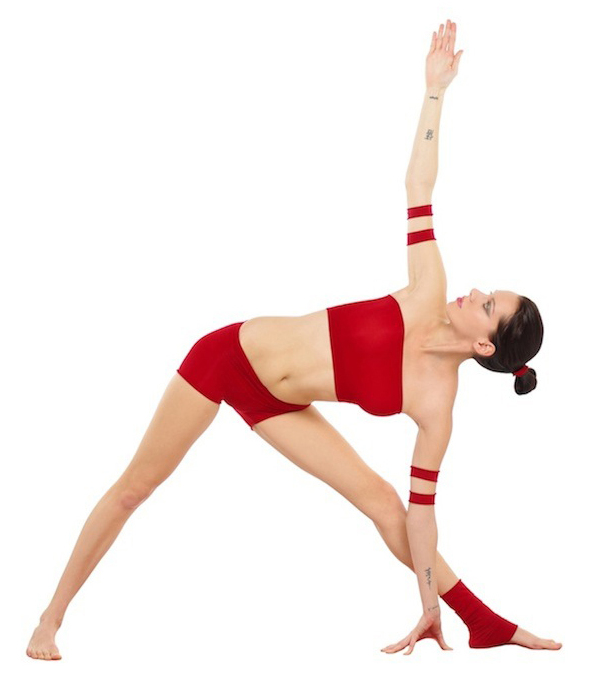|
Seetharaman Sundaram
Seetharaman Sundaram (25 February 1901–26 December 1994) was a lawyer and pioneer of yoga as exercise, often known as Yogacharya Sundaram, and the first person to publish a handbook of yoga asanas in English, his 1928 ''Yogic Physical Culture''. This was also the first yoga book to be illustrated with photographs. He travelled India with the bodybuilder K. V. Iyer, helping to popularise the new blend of hatha yoga and physical culture. Life Seetharaman Sundaram was born in Mathurai, Tamil Nadu in a Brahmin family. He trained as a lawyer and worked in law throughout his career. He ran the Yogic School of Physical Culture (also called the Sri Sundara Yoga Shala) in Bangalore in the 1930s, and travelled around India with the bodybuilder K. V. Iyer doing lecture/demonstrations, Iyer on muscles, Sundaram on yoga. His legal colleagues did not know that he was revered as a yoga guru; in 1949, a retired high court judge was astonished to see Sundaram being seen off at Madras's Centra ... [...More Info...] [...Related Items...] OR: [Wikipedia] [Google] [Baidu] |
Halasana
Halasana (Sanskrit: हलासन; IAST: ''halāsana'') or Plough pose is an inverted asana in hatha yoga and modern yoga as exercise. Its variations include Karnapidasana with the knees by the ears, and Supta Konasana with the feet wide apart. Etymology and origins The name Halasana comes from Sanskrit हला ''hala'', "plough" and आसन ''āsana'', "posture" or "seat". The pose is described and illustrated in the 19th century ''Sritattvanidhi'' as ''Lāṇgalāsana'', which also means plough pose in Sanskrit. Karnapidasana is not found in the medieval hatha yoga texts. It is described independently in Swami Vishnudevananda's 1960 '' Complete Illustrated Book of Yoga'' in the Sivananda Yoga tradition, and by '' B. K. S. Iyengar'' in his 1966 ''Light on Yoga'', implying that it may have older origins. The name comes from the Sanskrit words ''karṇa'' (कर्ण) meaning "ears", ''pīḍ'' (पीड्) meaning "to squeeze", and ''āsana'' (आसन) meaning " ... [...More Info...] [...Related Items...] OR: [Wikipedia] [Google] [Baidu] |
Matsyasana
Matsyasana ( sa, मत्स्यासन; IAST: ''Matsyāsana'') or Fish pose is a reclining back-bending asana in hatha yoga and modern yoga as exercise. It is commonly considered a counterasana to Sarvangasana, or shoulder stand, specifically within the context of the Ashtanga Vinyasa Yoga Primary Series. Etymology and origins The name comes from the Sanskrit words ''matsya'' (मत्स्य) meaning "fish" and ''asana'' (आसन) meaning "posture" or "seat". The asana is medieval, described in the 17th century '' Gheraṇḍa Saṃhitā'' 2.21. Description The asana is a backbend, where the practitioner lies on his or her back and lifts the heart ( anahata) chakra by rising up on the elbows and drawing the shoulders back. The neck is lengthened, and the crown of the head Sahasrara chakra is "pointed" toward the 'wall' behind the practitioner. As the arch of the back deepens with practice, and the heart and throat open further, the top of the head may brush ... [...More Info...] [...Related Items...] OR: [Wikipedia] [Google] [Baidu] |
Pranayama
Pranayama is the yogic practice of focusing on breath. In Sanskrit, '' prana'' means "vital life force", and ''yama'' means to gain control. In yoga, breath is associated with ''prana'', thus, pranayama is a means to elevate the '' prana'' ''shakti'', or life energies. Pranayama is described in Hindu texts such as the ''Bhagavad Gita'' and the ''Yoga Sutras of Patanjali''. Later in Hatha yoga texts, it meant the complete suspension of breathing. Etymology ''Prāṇāyāma'' (Devanagari: ') is a Sanskrit compound. It is defined variously by different authors. Macdonell gives the etymology as prana ('), breath, + ''āyāma'' and defines it as the suspension of breath. Monier-Williams defines the compound ' as "of the three 'breath-exercises' performed during (''See'' ', ', '". This technical definition refers to a particular system of breath control with three processes as explained by Bhattacharyya: ' (to take the breath inside), ' (to retain it), and ' (to discharge i ... [...More Info...] [...Related Items...] OR: [Wikipedia] [Google] [Baidu] |
Shatkriya
The shatkarmas (Sanskrit: षटकर्म ''ṣaṭkarma'', literally ''six actions''), also known as shatkriyas,Shatkarmas - Cleansing Techniques in Yoga Magazine, a publication of are a set of purifications of the body, to prepare for the main work of yoga towards (liberation). These practices, outlined by |
Mudra
A mudra (; sa, मुद्रा, , "seal", "mark", or "gesture"; ,) is a symbolic or ritual gesture or pose in Hinduism, Jainism and Buddhism. While some mudras involve the entire body, most are performed with the hands and fingers. As well as being spiritual gestures employed in the iconography and spiritual practice of Indian religions, mudras have meaning in many forms of Indian dance, and yoga. The range of mudras used in each field (and religion) differs, but with some overlap. In addition, many of the Buddhist mudras are used outside South Asia, and have developed different local forms elsewhere. In hatha yoga, mudras are used in conjunction with pranayama (yogic breathing exercises), generally while in a seated posture, to stimulate different parts of the body involved with breathing and to affect the flow of prana. It is also associated with bindu, bodhicitta, amrita, or consciousness in the body. Unlike older tantric mudras, hatha yogic mudras are generally inte ... [...More Info...] [...Related Items...] OR: [Wikipedia] [Google] [Baidu] |
Bandha (yoga)
A bandha ( sa, बंध) is a kriyā in Hatha Yoga, being a kind of internal mudra described as a "body lock," to lock the vital energy into the body. ''Bandha'' literally means bond, fetter, or "catching hold of".Iyengar, 1976: pp.435–437 Maha Bandha ("the great lock") combines all the other three bandhas, namely: * Mula Bandha, contraction of the perineum * Uddiyana bandha, contraction of the abdomen into the rib cage * Jalandhara Bandha, tucking the chin close to the chest In Ashtanga Vinyasa Yoga, these three Bandhas are considered to be one of the three key principles of yoga practice. ''Mula bandha'' ''Mūla bandha'' is a primary ''bandha'' in traditional yoga. The earliest textual mention of ''mūla bandha'' is in the 12th century Shaiva Natha text '' Gorakṣaśataka'' which defines it as a yogic technique to achieve mastery of breath and to awaken the goddess Kuṇḍalinī. Etymology Mula Bandha (Sanskrit: मूल बंध) is from ''Mūla'', meaning various ... [...More Info...] [...Related Items...] OR: [Wikipedia] [Google] [Baidu] |
Padahastasana
Uttanasana ( sa, उत्तानासन; ) or Standing Forward Bend, with variants such as Padahastasana where the toes are grasped, is a standing forward bending asana in modern yoga as exercise. Etymology and origins The name comes from the Sanskrit words उत्तान ''uttāna'', "intense stretch"; and आसन; ''āsana'', "posture" or "seat". The pose is a modern one, first seen in the 20th century. A pose with the name Uttānāsana is illustrated in the 19th century ''Sritattvanidhi'' but it is quite different from the modern pose (lying on the back, with elbows touching the knees and the hands behind the neck). The modern pose is described in Krishnamacharya's 1934 ''Yoga Makaranda'', and in the works of his pupils, B. K. S. Iyengar's 1966 ''Light on Yoga'' and Pattabhi Jois's Ashtanga Vinyasa Yoga. Theos Bernard however illustrates the related pose "Padhahasthasana" (sic) in his 1944 report of his experience of hatha yoga on the border of India and Tibet, s ... [...More Info...] [...Related Items...] OR: [Wikipedia] [Google] [Baidu] |
Trikonasana
Trikonasana or Utthita Trikonasana ( sa, उत्थित त्रिकोणासन; IAST: ''utthita trikoṇāsana''), xtendedTriangle Pose is a standing asana in modern yoga as exercise. Variations include Baddha Trikonasana (bound triangle pose) and Parivrtta Trikonasana (revolved triangle pose). Etymology and origins The name comes from the Sanskrit words ''utthita'' (उत्थित), "extended", ''trikoṇa'' (त्रिकोण) "triangle", and ''āsana'' (आसन) "posture" or "seat". The pose is first described in the 20th century, appearing in the teaching of Tirumalai Krishnamacharya, including his 1934 book ''Yoga Makaranda'', and in the works of his students. Description Trikonasana is performed in two parts, facing left, and then facing right. The practitioner begins standing with the feet one leg-length apart, knees unbent, turns the right foot completely to the outside and the left foot less than 45 degrees to the inside, keeping the heels in ... [...More Info...] [...Related Items...] OR: [Wikipedia] [Google] [Baidu] |
Savasana
Shavasana ( sa, शवासन; IAST: ''śavāsana''), Corpse Pose, or Mritasana, is an asana in hatha yoga and modern yoga as exercise, often used for relaxation at the end of a session. It is the usual pose for the practice of yoga nidra meditation, and is an important pose in Restorative Yoga. Etymology and origins The name Shavasana is from Sanskrit शव ''Śava'', "corpse" and आसन ''Āsana'', "posture" or "seat". The alternative name Mritasana is from Sanskrit मृत ''mṛta'', "death". The earliest mention of the pose is in the 15th century '' Hatha Yoga Pradipika'' 1.32, which states in the context of a medieval belief system that "lying down on the ground supine, like a corpse, is called Shavasana. It eliminates tiredness and promotes calmness of the mind." The name Supta Padangusthasana is from Sanskrit सुप्त पादाङ्गुष्ठासन ''supta pādāṅguṣṭhāsana'', from सुप्त supta, "reclined" and पादा� ... [...More Info...] [...Related Items...] OR: [Wikipedia] [Google] [Baidu] |
Mayurasana
Mayūrāsana ( sa, मयूरासन) or Peacock pose is a hand-balancing asana in hatha yoga and modern yoga as exercise with the body held horizontal over the hands. It is one of the oldest non-seated asanas. Etymology and origins The name comes from the Sanskrit words ''mayūra'' (मयूर) meaning "peacock" and ''āsana'' (आसन) meaning "posture". Mayurasana is one of the oldest non-seated asanas used in hatha yoga; it is first described in the 10th century '' Vimānārcanākalpa''. The '' Vāsiṣṭha Saṁhitā'' 1.76-7 states that it destroys all sins. Description In this asana the body is raised like a horizontal stick holding the floor with both palms while the body is supported by the elbows. Variations Hamsasana (Swan Pose) is identical to Mayurasana except that the hands are placed with the fingers pointing forwards. Padma Mayurasana (Lotus in Peacock Pose) has the legs crossed as in Lotus Position. See also * List of asanas * Planche (exer ... [...More Info...] [...Related Items...] OR: [Wikipedia] [Google] [Baidu] |
Paschimottanasana
Pashchimottanasana ( sa, पश्चिमोत्तानासन, translit=paścimottānāsana), Seated Forward Bend, or Intense Dorsal Stretch is a seated forward-bending asana in hatha yoga and modern yoga as exercise. Janusirsasana is a variant with one knee bent out to the side; Upavishthakonasana has the legs straight and wide apart. Etymology and origins The name Paschimottanasana comes from the Sanskrit words ''paschima'' (पश्चिम, paścima) meaning "west" or "the back of the body"; ''uttana'' (उत्तान, uttāna) meaning "intense stretch" or "straight" or "extended"; and ''asana'' (आसन, āsana) meaning "posture" or "seat". The pose is described in the 15th-century ''Hatha Yoga Pradipika'', chapter 1, verses 28-29. The name Dandasana ( sa, दण्डासन; IAST: ''daṇḍāsana'') is from Sanskrit दण्ड ''daṇḍa'' meaning "stick" or "staff". The pose is not found in the medieval hatha yoga texts. The 19th century ''Sritat ... [...More Info...] [...Related Items...] OR: [Wikipedia] [Google] [Baidu] |
Ardha Matsyendrasana
Matsyendrasana ( sa, मत्स्येन्द्रासन; IAST: ''Matsyendrāsana''), Matsyendra's Pose or Lord of the Fishes Pose, is a seated twisting asana in hatha yoga and modern yoga as exercise. The full form is the difficult Paripurna Matsyendrasana. A common and easier variant is Ardha Matsyendrasana. The asana has many variations, and in its half form is one of the twelve basic asanas in many systems of hatha yoga. Etymology and origins The name comes from the Sanskrit words परिपूर्ण ''Paripurna'', perfected; मत्स्येन्द् ''Matsyendra'', one of the founders of hatha yoga, whose name in turn means "lord of the fishes"; and आसन ''asana'', posture or seat; अर्ध ''ardha'' means half. The asana is medieval, described in the 15th century ''Haṭha Yoga Pradīpikā'' 1.26-7, which states that it destroys many diseases, and the 17th century ''Gheraṇḍa Saṃhitā'' 2.22-23. Yogi Ghamande chose the asana for the ... [...More Info...] [...Related Items...] OR: [Wikipedia] [Google] [Baidu] |








